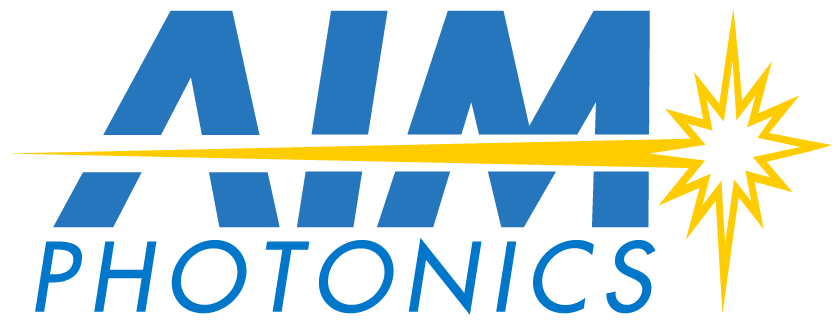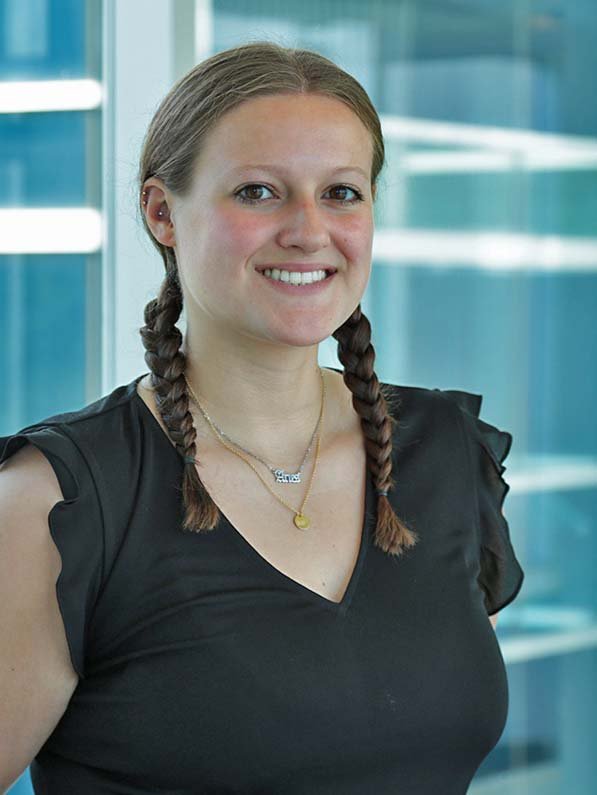AIM Photonics “Graduates” its Summer Intern Class of 2022
The AIM Photonics Class of 2022 summer internship program culminated in a research poster session held recently at the Albany Nanotech Complex. Participants included (L-R): Amit Dikshit, technical mentor; Nicholas Fahrenkopf, technical sponsor; Quentin Curry, summer intern; Javery Mann, summer intern; Daniel Crowley, summer intern; Jobayer Hossain, technical mentor, and M. Rakib Uddin, photonic component design engineer. Not pictured: Jaydn Lee, summer intern and Lewis Carpenter, technical mentor.
As summer draws to an end, it’s somewhat bittersweet for us to bid farewell to the remarkably bright and talented students in our Summer Intern Class of 2022, as they complete their internships and embark on their further studies and future careers armed with the specialized knowledge and skills that could only be gained in a unique work environment like AIM Photonics.
“The goal of AIM Photonics’ internship program is to give highly qualified students hands-on education and training opportunities in all aspects of photonic integrated circuit design, fabrication and packaging in our unique R&D/Manufacturing setting,” said Robert Geer, Director of Education and Workforce Development at AIM Photonics. “Students who come through our internship program get a valuable, real-world educational work experience in our advanced manufacturing facilities in Albany and Rochester, which then gives them a powerful launching pad for interesting and rewarding employment opportunities in the U.S. integrated photonics industry.”
Developing an effective internship program in an emerging technology such as integrated photonics requires a specialized effort. It’s important to provide a learning experience that is both challenging and useful to the intern, while providing them with opportunities to conduct work that contributes directly to the advancement of the technology. This involves matching up students’ individual interests and skills with specific projects that must be completed within a defined timeframe.
And the 12-week summer internships at AIM Photonics were structured to do just that.
“Overall, this year our interns really helped the AIM Photonics group at SUNY Poly by helping to advance our testing and characterization capabilities,” said Nicholas Fahrenkopf, Photonics Engineering Manager and technical sponsor of the AIM Photonics summer interns.
“They were instrumental in testing many of the components our engineers have designed, creating new data processing tools, and developing the ability to do fiber attach here in Albany. These are all things we’ve needed to do and we’re able to get them done much sooner with their help,” Fahrenkopf added.
In addition to their previous photonics experience, each of the students brought with them their own unique skills and knowledge. “Not only did they learn from our team, but they also taught us a thing or two,” Fahrenkopf added.
That newly acquired expertise was on demonstration in a summer research poster session held recently at the Albany Nanotech Complex, where all of the summer interns doing work at SUNY Poly, including those working at both the Albany and Utica campuses, had the opportunity to present the work they accomplished over the summer.
Quentin Curry
Quentin Curry’s internship at AIM Photonics involved Photonic data analysis in R—a new software package he helped to create—that facilitates the extraction of useful parameters of photonic components from measured data. And although the software is primarily intended for the retrieval of information, it is also useful for calculating component parameters. Examples include extracting resonance peaks and calculating Q-factors from measured ring resonator data or subtracting grating coupler response background from the measured photonic device responses.
Curry noted that because of how relatively young the field of photonics is, there is no true standardization of methods used across different labs.
“The R-photonics package is meant to work for different types of analysis and serve as a start for documenting different testing analysis methods. One reason I wanted to participate in this internship is to see how AIM Photonics fits into the computation and sensor ecosystem,” he said.
“Quentin learned a new tool and techniques of data analysis from real-world devices which is very valuable,” said Amit Dikshit, who served as Curry’s technical mentor at AIM Photonics. “Undergraduate students often don’t gain these kinds of insights in academics.”
Learning a new programming language also forced Curry to meticulously document everything he was doing, which he believes will also help him in his own future projects.
“My plans are to push the limits of computing and make our simulations much more efficient and faster in order to provide answers in biology that we only solve empirically now,” he added.
Quentin Curry is currently attending SUNY Polytechnic Institute for Nanoscale Engineering and expects to graduate this December. He plans to continue his education in Applied Mathematics and work in labs that are doing experimental research on theoretical computer science.
Daniel Crowley
Daniel Crowley’s work in fiber attachment for silicon photonics involved developing a robust and repeatable process for fiber V-groove attach to AIM Photonics multi-project wafer (MPW) chips, enabling light to enter and exit a silicon photonic chip using a standard fiber optic.
“The establishment of this process at the Albany site enables the rapid prototyping of optofluidic sensors for next-generation labelling-free sensing of a variety of biological and chemical analytes,” said Fahrenkopf.
Crowley pointed out that his internship experience at AIM Photonics taught him more about what to consider when testing photonic devices. In particular, he said the tool training and other skills that he developed during his internship will help him conduct better research going forward.
One thing in particular that impressed Crowley was that the work environment as an intern with AIM was, in his words, not the least bit stressful. “The overarching goal was for me to learn as much as I could, and the people I worked with did a great job making that possible,” he said.
Daniel Crowley is currently attending SUNY Polytechnic Institute for Nanoscale Engineering, and expects to graduate in May 2023. Following that, he plans to continue his education in graduate school.
Jadyn Lee
Jadyn Lee’s internship at AIM Photonics involved the characterization of on-chip directional couplers and investigating variations in insertion loss, splitting ratio, and s-parameter, both chip-to-chip and within a chip.
This is particularly valuable, Fahrenkopf noted, because collecting this information allows AIM Photonics to characterize how well these components work and to eventually create compact models.
“With this information, we can offer process design kit (PDK) components to designers and they can be sure the components will perform as expected because they are hardware-verified, meaning we’ve already fabricated and tested them and proven how they behave,” he said.
Lee was particularly impressed by the hands-on aspect of her internship experience.
“At school we read a ton of information on photonics, but being able to actually put my knowledge and skills to work was very exciting. Learning how to do grating or vertical coupling was a challenge, but I loved every second of it,” she said.
However, Lee noted the real highlight of her work at AIM Photonics was working on a state-of-the-art prober capable of performing optical, electrical, or electro-optical tests on both full 300 mm wafers and individual chips, an opportunity students don’t normally get in a typical university research lab.
Jadyn Lee is currently enrolled in the photonics program at Stonehill College in Easton, Massachusetts. She hopes to graduate a semester early, in December 2022. Her future plans include continuing her studies in graduate school, although she is still undecided which engineering degree she will pursue for her masters.
Javery Mann
Javery Mann’s work during his internship at AIM Photonics focused on characterizing on-chip ring resonators and investigating the variation in insertion loss, free spectral range, and extinction ratio, both chip-to-chip and within a chip.
One important study he is doing is to find the optimum wavelength step needed in a resonator test to precisely locate the resonant peak position and depth with the shortest measurement time possible.
Mann’s prior educational experience involved working with lasers, which proved to be useful in his internship, but he acknowledged that his understanding of integrated photonics was limited to theory from his courses.
“I spent a great deal of the summer reading textbooks and familiarizing myself with the technology,” Mann said. “I hadn't worked with fiber probes before, so I took advantage of the opportunity to make measurements with the one in the lab. There was also quite a bit of coding involved, so I was able to get plenty of much-needed practice there, as well,” he added.
But perhaps the most rewarding aspect of his experience at AIM Photonics is that after his internship ends, Mann said he will be moving to Albany to start his career in integrated photonics as a test engineer at…AIM Photonics!
Javery Mann graduated with a BS in Physics from Worcester Polytechnic Institute in May 2022 and will report for work as a test engineer at AIM Photonics this fall.





